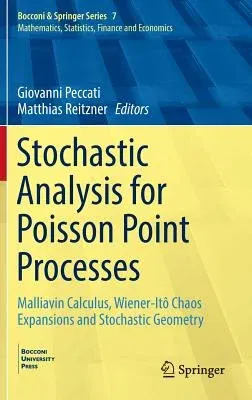Stochastic Analysis for Poisson Point Processes: Malliavin Calculus, Wiener-Itô Chaos Expansions and Stochastic Geometry (2016)Hardcover - 2016, 19 July 2016

Qty
1
Turbo
Ships in 2 - 3 days
In Stock
Free Delivery
Cash on Delivery
15 Days
Free Returns
Secure Checkout

Part of Series
Bocconi & Springer
Print Length
346 pages
Language
English
Publisher
Springer
Date Published
19 Jul 2016
ISBN-10
3319052322
ISBN-13
9783319052328
Description
Product Details
Book Edition:
2016
Book Format:
Hardcover
Country of Origin:
NL
Date Published:
19 July 2016
Dimensions:
23.39 x
15.6 x
2.06 cm
ISBN-10:
3319052322
ISBN-13:
9783319052328
Language:
English
Location:
Cham
Pages:
346
Publisher:
Series:
Weight:
684.92 gm